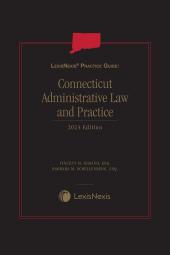We are in the process of migrating the LexisNexis Store. During this transition, some customers may not be able to access their Download Center or new electronic orders. Please call Customer Service 1-800-833-9844 or Chat With A Support Representative <https://supportcenter.lexisnexis.com/app/chat/store_chat/>
How to Manage Your Law Office
Select a format
 International Order Inquiry
International Order Inquiry
Select subscription type
Terms & conditions
Subscribers receive the product(s) listed on the Order Form and any Updates made available during the annual subscription period. Shipping and handling fees are not included in the annual price.
Subscribers are advised of the number of Updates that were made to the particular publication the prior year. The number of Updates may vary due to developments in the law and other publishing issues, but subscribers may use this as a rough estimate of future shipments. Subscribers may call Customer Support at 800-833-9844 for additional information.
Subscribers may cancel this subscription by: calling Customer Support at 800-833-9844; emailing customer.support@lexisnexis.com; or returning the invoice marked "CANCEL".
If subscribers cancel within 30 days after the product is ordered or received and return the product at their expense, then they will receive a full credit of the price for the annual subscription.
If subscribers cancel between 31 and 60 days after the invoice date and return the product at their expense, then they will receive a 5/6th credit of the price for the annual subscription. No credit will be given for cancellations more than 60 days after the invoice date. To receive any credit, subscriber must return all product(s) shipped during the year at their expense within the applicable cancellation period listed above.
The total price includes the product(s) listed in the Order Form and any Updates for a limited period (minimum period of 30 days) after the order is placed ("Order Window"). Shipping and handling fees are not included in the grand total price.
All shipments may be returned, at subscribers' expense, for full credit of the Price within 30 days of receipt.
Shipments may not be returned, and no credits will be issued, more than 30 days after receipt.
After the Order Window, subscribers will receive notice of Updates along with the then-current grand total price and order process as Updates become available. Subscribers will only be shipped those Updates they specifically request.
Product description
View a sample of this title using the ReadNow feature
Today, the way you manage your law office could be the difference between the success and failure of your firm. How to Manage Your Law Office is a two-volume practical guide that provides readers with cutting-edge information about effective techniques in law office administration. It includes discussions on topics ranging from the intricacies of personnel management and law office ergonomics to how law offices can best take advantage of modern technology.
How to Manage Your Law Office offers the reader a wealth of practical tips and recommendations from how to build a law practice to how to manage case control and paper volume.
eBooks, CDs, downloadable content, and software purchases are noncancelable, nonrefundable and nonreturnable. Click here for more information about LexisNexis eBooks. The eBook versions of this title may feature links to Lexis+® for further legal research options. A valid subscription to Lexis+® is required to access this content.
Table of contents
VOLUME 1
CHAPTER 1 Management for Lawyers
§ 1.01 Why Management?
§ 1.02 Functions of Management
§ 1.03 Management Concepts
§ 1.04 Management Divisions
§ 1.05 Levels of Decision-Making
§ 1.06 Management Techniques
§ 1.07 Traits of Managing Lawyers
§ 1.08 A Special Problem
§1.09 Building and Maintaining an Organization
§ 1.10 Forming Committees
§ 1.11 Summary
CHAPTER 1A Drafting Your Business Plan
§ 1A.01 Overview
§ 1A.02 Beginning With the End in Mind
§ 1A.03 Anatomy of a Business Plan
§ 1A.04 Financial Plan
§ 1A.05 Business Plan of Action and Marketing Plan
§ 1A.06 Management Structure, Firm and Personnel Audit
§ 1A.07 Contingencies
§ 1A.08 Looking to the Future-Quality Control
CHAPTER 2 Organization of Private Law Firms
§ 2.01 Overview
§ 2.02 The Concept of Organization
§ 2.03 Solo Practice
§ 2.04 Office Sharing Practices
§ 2.05 Group Practice Organization
§ 2.06 Changing Structural Needs
§ 2.07 National Firms
§ 2.08 Classes of Partners and Associates
§ 2.09 Professional Legal Administrators
§ 2.10 Departments and Specialists
§ 2.11 Practice Groups as Part of the Organizational Structure
§ 2.12 Group Management
§ 2.13 Of Counsel
§ 2.14 Temporary Lawyers and Outsourcing Services
§ 2.15 Lateral Lawyers
CHAPTER 3 Organization of Corporate Law and Patent Departments
§ 3.01 In General
§ 3.02 Forms of Organization-Centralized vs. Decentralized
§ 3.03 Relationship with Other Corporate Components
§ 3.04 Organizational and Reporting Relationships
§ 3.05 Best Practices of Corporate Law Departments
§ 3.06 Quality Service-Conducting a Client Survey
§ 3.07 Preventive Law Programs and Legal Audits
§ 3.08 Professional Administration
§ 3.09 Corporate Law Department Manuals
§ 3.10 Selection and Evaluation of Outside Counsel
§ 3.11 Outside Counsel Retention and Evaluation-Forms Package
§ 3.12 Partnering With Outside Counsel
§3.13 Salaries
§ 3.14 Audits of Private Law Firms by Corporations
§ 3.15 Managing Overseas Law Departments
CHAPTER 3A Client Management
§ 3A.01 Know Your Ideal Clients
§ 3A.02 Finding the Right Clients
§ 3A.03 Avoiding "Toxic Clients"
§3A.04 Rejecting Potential Clients
§ 3A.05 Withdrawing from an Ongoing Case
§ 3A.06 Finding Good Clients
§ 3A.07 Getting Paid
§ 3A.08 Importance of Signed Fee Agreements
CHAPTER 4 Legal Fees
§ 4.01 In General
§ 4.02 Types of Fees
§4.03 Setting and Billing the Fee
§ 4.04 Billing Follow-Up
§ 4.05 The Language of Billing
§ 4.06 Review of Fee Policies
§ 4.07 The Art of Billing
§ 4.08 Keys to Successful Billing
CHAPTER 5 Compensation and Profit Distribution
§ 5.01 The Meaning of Pay
§ 5.02 The Concept of a Labor Market
§ 5.03 Compensation Plans-In General
§ 5.04 Compensation Considerations
§ 5.05 Form of Organization
§ 5.06 Factors Considered in Compensation Plans
§ 5.07 Classes of Partners
§ 5.08 The Need for Flexibility and Goal Setting
§ 5.09 Administration of the Compensation Process
§ 5.10 Practice Area Considerations
§ 5.11 Determining Compensation Structure
§ 5.12 Confederation or Team
§ 5.13 Prospective or Retrospective Orientation
§ 5.14 Basic Approaches to Compensation
§ 5.15 Tiered Systems
§ 5.16 Other Owner Compensation Issues
§ 5.17 Salary Plans in Corporations and Government Agencies
§5.18 Use of Salary Information to Establish Salary Plans
§ 5.19 Summary-Re-examining Compensation Systems
CHAPTER 5A Growth, Mergers, and Branch Offices
§ 5A.01 Law Firm Growth
§5A.02 Growth in the 1990s and 2000s
§ 5A.03 Controlling Growth
§ 5A.04 Planning to Grow
§ 5A.05 Why Merge?
§ 5A.06 Merger Feasibility
§5A.07 Planning a Merger
§ 5A.08 Mergers Between Firms in Different Locations
§ 5A.09 Establishment of Branch Offices
§ 5A.10 Rational Merger Tests
§ 5A.11 What are the Key Costs of Mergers?
§ 5A.12 The Key to a Successful Merger—Rigorous Integration
§5A.13 International Branch Offices
§ 5A.14 Special Problems of Growth
§ 5A.15 Merger of Financial Systems
§ 5A.16 Monitoring Branch Office Success
§ 5A.17 Alternatives to Merger; Law Firm Networks and Strategic Alliances
§5A.18 Legal Service Plan
§5A.19 Downsizing and Outplacement
§5A.20 Outsourcing
§ 5A.21 Alternatives to Downsizing Professional Personnel
CHAPTER 6 Strategic Planning and Marketing
§ 6.01 Strategic Planning vs. Marketing
§ 6.02 Development of a Strategic Plan
§ 6.03 Law Firm Marketing
§6.04 Case Study—Matrimonial Boutique Firm
§ 6.05 Marketing in a Multi-Office Environment
§ 6.06 Finding Time to Market
§ 6.07 Other Client Development Activities: Responding to Requests for Proposals
§ 6.08 Conclusion
CHAPTER 6A Law Firm Retreats
§ 6A.01 Reasons for Conducting Retreats
§ 6A.02 Types of Retreats
§ 6A.03 Planning the Retreat
§6A.04 Managing the Retreat
§ 6A.05 Implementing Retreat Results
§ 6A.06 Summary
Appendix 6A Draft Retreat Agenda
Appendix 6A-1 Retreat Topics
CHAPTER 7 Associate Hiring, Training, and Promotion
§ 7.01 Hiring New Associates and Lateral Associates
§7.02 Paying Associates
§ 7.03 Integration, Training and Professional Development of Associates
§ 7.04 Associate Performance Evaluation
§ 7.05 Advancement to Partnership-What Does It Take?
§7.06 Associate Departures
CHAPTER 8 Agreements for Partnerships and Professional Corporations
§ 8.01 Basic Consideration
§8.02 Income to the Firm
§8.03 Death or Withdrawal
§8.04 Disability
§8.05 Retirement
§8.06 Expulsion
§8.07 Life Insurance
§8.08 Ownership, Capital Interests and Voting
§8.09 New Partners
§8.10 Ownership of Clients and Files
§8.11 Management
§8.12 Disputes
§8.13 Outside Activities
§8.14 Expenses
§8.15 Dissolution of a Partnership
§ 8.16 Dissolution of a Professional Corporation
§8.17 Dissolution Checklist
CHAPTER 8A Professional Corporations
§8A.01 Introduction
§8A.02 Transferability of Ownership
§8A.03 Management Structure
§8A.04 Fiscal Year
§8A.05 Employee Benefits
§8A.06 Limited Liability
§8A.07 Disadvantages of Corporations
§8A.08 Compensation
CHAPTER 9 Personnel Administration of Staff Employees
§9.01 In General
§9.02 The Employment Application
§9.03 The Interview
§9.04 Testing
§9.05 Reference Checking and Hiring
§9.06 Introduction and Training
§9.07 Paralegal Employees
§9.08 Maintaining Support Staff Morale
§9.09 Evaluation of Staff
§9.10 Salaries
§9.11 Personnel Policies and the Employee Handbook
§9.12 Retaining Trained Personnel
§9.13 Staffing Ratios in Law Firms
§9.14 Labor Organizations
§9.15 Exit Interviews
§9.16 Discharging Employees
§9.17 Severance Pay
VOLUME 2
CHAPTER 10 [Reserved]
CHAPTER 11 Accounting Basics
§ 11.01 Introduction
§ 11.02 Method of Accounting
§ 11.03 The Accounting Cycle
§ 11.04 Chart of Accounts
§ 11.05 Financial Statements
§ 11.06 Internal Controls
§ 11.07 Form of Organization
§ 11.08 Unreasonable Compensation for Shareholders of Incorporated Law Firms
CHAPTER 12 Law Office Technology
§ 12.01 Technology in Today's Law Practice
§ 12.02 Planning and Implementing Law Office Technology
§ 12.03 Paperless File Management
§ 12.04 Email
§ 12.05 Case Management
§ 12.06 Marketing With the Internet in Mind
§ 12.07 Website
§12.08 Social Media
§12.09 Other Marketing Tools
§12.10 Accepting Payments Electronically
§12.11 Listserv
CHAPTER 13 Technology Risks and Ethics Issues
§13.01 In General
§13.02 New Technologies and their Risks
§13.03 How to Prevent Law Firm Data Breaches
§13.04 Ethics Issues
§13.05 American Bar Association's Model Rules
§13.06 Summary of Selected State Bar Ethics Opinions
CHAPTER 14 Law Office Design
§14.00 Modern Law Offices
§14.01 Why Is Law Firm Space Design Important?
§14.02 Phases of the Space Design Process
§14.03 Getting Started
§14.04 The Planning Process
§14.05 Getting Help in Locating, Planning and Furnishing Offices
§14.06 Assessing Space Alternatives
§14.07 Estimating Space Needs Before the Program Is Prepared
§14.08 Rentable and Usable Space
§14.09 Lease Negotiations and Tenant Workletters
§14.10 The Americans with Disabilities Act (ADA)
§14.11 Issues to Be Addressed Before Planning Begins
§14.12 Planning the Law Firm's Public Areas
§14.13 Planning Work Areas for People—General Guidelines
§14.14 Planning Work Areas for Lawyers
§14.15 Planning Work Areas for Paralegals
§14.16 Planning Work Areas for Secretaries
§14.17 Planning Work Areas for Others
§14.18 Planning for the Firm's Law Library and File Room
§14.19 Planning for Work Rooms
§ 14.20 Planning for General Support Services
§14.21 [Reserved]
§14.22 Planning for Other General Areas
§14.23 Special Challenges of Multi-Floor Tenants
§14.24 The Floor Plan
§14.25 Adding Dimension and Interest to the Space
§14.26 Buying Furniture
§14.27 [Reserved]
§14.28 Owning Office Space
§14.29 Further Reading
§14.30-14.49 [Reserved]
§14.50 Appendix—Case Study of Law Firm Space Plan
CHAPTER 15 Nonlawyer Staff
§15.01 Why This Chapter
§15.02 Functions of the Job
§15.03 Career Advancement
§15.04 Basics for Every Staff Member
§15.05 Written Communications
§15.06 The Lawyer-Staff Team
§15.07 Reference Sources
§15.08 The Role of Staff in the Office
§15.09 Paralegals
§15.10 Organization of Duties
§15.11 Training Paralegals
§15.12 Status Problems
§15.13 Paralegal Overtime
§15.14 Career Progression for Paralegals
§15.15 Paralegal Timekeeping and Billing
§15.16 Cautions in Use of Paralegals
§15.17 Paralegal Ethics
CHAPTER 16 The Changing Practice of Law
§16.01 Positive Signs for the Future
§16.02 Economic Trends
§16.03 Pricing Legal Services
§16.04 How to Use Paralegals Effectively and Profitably
§16.05 Close and Mandatory Supervision of Associates and Partners: An Idea Whose Time Has Come
§16.06 The Art of the Client Interview
§16.07 Putting Quality Management in Perspective: Four Things That Work
§16.08 Process Reengineering: Revolutionizing Legal Services
§16.09 How to Effectively Manage Your Law Firm's Legal Services
§16.10 Transfer of a Law Practice
§16.11 Is Your Law Firm a Good Credit Risk?
§16.12 Differentiating Client Service
§16.13 Family Leave and Reduced Schedule Policies
§16.14 Flexible Work Arrangements and a Portable Work Environment
§16.15 International Marketing Management for Law Firms
§16.16 Diversity and Inclusion
§16.17 Law Firm Management Trends
CHAPTER 17 Attorney Well Being
§17.01 Introduction
§17.02 Legal Framework
§17.03 Discipline and Rehabilitation
§17.04 Lawyer Assistance Programs
APPENDIX A: Complete Partnership Agreement
APPENDIX A1: Checklist for Drafting Partnership Agreement
APPENDIX A2: The Partnership Agreement of a Smaller Firm
APPENDIX B: Bylaws of a Professional Corporation
APPENDIX B1: Shareholders' Agreement
APPENDIX B2: Employment Agreement
APPENDIX B3: Principal Compensation Plan
APPENDIX C: Legal Services Agreements
APPENDIX D: Agreement for Office Space Sharers
APPENDIX E: Paralegals: The Current State of the Profession
APPENDIX F: Of Counsel Agreement
APPENDIX G: Sample Virtual Assistant Manual
INDEX
 Lexis Nexis
Lexis Nexis 


